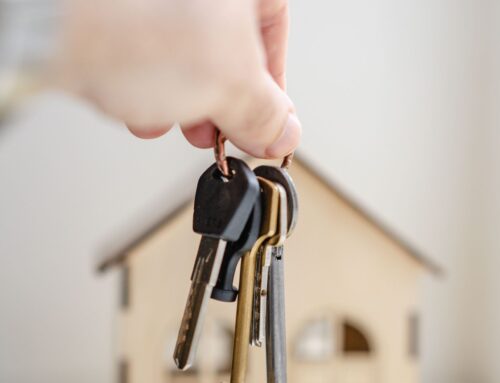Purchasing a home is one of the biggest investments someone can make. For many, saving up for a down payment and going through the channels of traditional mortgage lenders is the only way to buy a home. However, other options are available that may be a better fit for some people. Owner financing is one such option – allowing buyers to purchase a property by contracting with the seller to pay back the loan over time.
We’ll explain how owner financing works, how it can benefit you as a buyer or seller, and how to organize an owner-financed transaction.
The Advantages of Purchasing a New Home
The “American Dream” is typically referred to as owning a home. While purchasing a home is a significant investment with significant upfront fees, there are numerous long-term benefits that aren’t always visible. Aside from having a place to call home, buyers gain equity, have stable housing payments, and various other advantages.
No Problems With the Landlord
You have power over your life when you own a home. You won’t have to deal with a landlord; whether it’s modest maintenance or a total remodel of your property, renting is a nuisance in many ways. You rely on a landlord to provide water, power, maintenance, and practically everything else.
Security & Comfort
When you buy a house, you’re giving your family a place to call their own. After a long day at work, a long drive, and constant stress, returning home to your own nest provides a sense of security and comfort that is simply unrivaled.
After all, there’s no place like ‘home’ where you can genuinely unwind and be yourself.
Zero Uncertainty
There is no worry or anxiety associated with the landlord’s potential of terminating the lease agreement prematurely if you own your own house. Furthermore, there is no need to renew the lease every year or re-negotiate the fee regularly.
No Compromise
Rent is an expense, and the usual trend is to cut back on spending. As a result, you may find yourself compromising on many factors such as location, size, and facilities. On the other hand, when you buy a house, you will make sure that the property suits your needs.
Your rent is more significant since you don’t receive any interest on the deposit you pay to the landlord (which can be rather expensive in high-end areas) during the lease term.
Home as an Investment
When you know you’ll be staying in a place for a long time, it’s a good idea to buy a home to give you a sense of belonging and permanence. You develop a sense of belonging to the city and its way of life. You have the impression that you have finally found your footing in life.
Aside from that, property values typically rise with time. Purchasing a home entails increasing your wealth over time. Delaying your property acquisition will need you to invest a more considerable sum (in addition to paying rent for a more extended period).
Getting Your Dream House? Here Are Things to Consider When Buying a New Home
So, how can you know if purchasing a property is the correct decision for you? Here’s how to do it.
Budget
If you ask your friends and relatives who’ve already gone through the home-buying process, they are unlikely to say it was less expensive than they anticipated. As a result, it’s generally a good idea to overestimate your costs.
A reasonable debt-to-income ratio is an excellent place to start. It gives you a better idea of how much you can spend on housing without living off peanut butter and jelly sandwiches for the next ten years or more. You can find various online calculators and forms that will do the math based on your inputs.
The Size of the House You’ll Need
No matter how tempting it may be, never acquire more space than you require right now (expected family growth included). A larger home means more room to manage, more utility bills to pay, and more things to go wrong.
Numbers of Loan Approvals and Down Payment Options
Pre-approval for a loan isn’t a guarantee, but it does give you a decent indication of the type of mortgage you’ll be able to afford, making it a vital step. Your mortgage approval figures will also determine how much down payment you should consider—usually around 20%. However, this differs for government FHA loans and individual transactions negotiated with sellers.
It’s time to move on if you find a home that exceeds your loan pre-approval limit or you can’t afford to put down 20% cash. No matter how much you fall in love with a house, you must keep within your limits.
Taxes and Insurance
You want to protect your property from disaster and catastrophic damage, but did you realize that banks and lenders are also trying to protect themselves from you? You can bundle your homes insurance with another policy you already have, such as auto or life insurance, or pay it as part of your monthly mortgage payment and handle it through a different escrow account under your primary loan.
Property taxes can also be paid through the same escrow account as your mortgage payment, but if they’re not paid on time, you may owe a lump sum payment when the property taxes are evaluated each year.
What is Owner Financing?
A financial agreement between a homeowner and a home buyer that replaces a standard bank-subsidized mortgage with a straight payment plan between the seller and the buyer is known as owner financing. Owner financing works similarly to a traditional bank loan in that the seller funds the home, and the buyer repays the seller over time according to the conditions of the loan.
This process will begin with a substantial down payment on the house and a monthly loan payback amount plus interest. Owner financing is typically more expensive than regular lending from a bank or other financial institution. It is, nevertheless, a realistic option for house buyers who are unable to obtain financing from a standard lender.
How Does Owner Financing Work?
The following is a general summary of the owner financing process.
- Financing terms are agreed upon by both the buyer and the seller. When the buyer and seller sign a promissory note, they agree on the loan terms. This covers parameters such as interest rates, amortization schedules (the period for making regular mortgage payments), and the loan’s payoff deadline.
- The buyer makes a down payment. After both parties have agreed on financing terms, the buyer makes a down payment on the property to secure the purchase. Compared to a standard mortgage lender, this upfront payment is often a larger percentage of the purchase price. Given the financial risk they are taking, the owner would want as much security as possible.
- The buyer pays the loan in monthly installments. Typically, the buyer will pay off the home loan amount in monthly installments. This includes direct property tax and insurance payments, often included in a regular mortgage but not with owner financing.
- The buyer repays their loan. The buyer will typically be required to pay a balloon payment or a lump-sum payment after the loan period to cover any leftover costs. If the buyer cannot make the balloon payment, they may seek additional financing to pay the seller, taking out a new loan to cover the remaining balance of the home’s price plus interest.
Types of Owner Financing
A formal contract should be used to memorialize an owner financing agreement. An owner financing arrangement can be structured in various ways, including those listed below.
Promissory Note or Mortgage
This model is similar to a standard mortgage deed. The buyer signs a document confirming that the lender has a security interest in their home until the debt is repaid. The buyer gets the title in this scenario, and the mortgage is documented with the local government.
Deed of Trust
Another type of promissory note that is similar to a mortgage deed is a deed of trust. Homeownership is held by a third-party trustee in the act of trust. The title is released to the buyer once the loan terms have been met.
Contract of Deed
In a contract for deed, the buyer does not obtain the deed and title to the property until the debt is paid off in full. The seller keeps the property deed and title until that time.
Lease-purchase Agreement
A lease-purchase agreement, also known as a rent-to-own deal, involves the buyer leasing the property for some time before deciding on the final conditions of purchase. Any rent paid during the lease period goes toward selling the home if the buyer chooses to buy at the end of the lease period.
Owner Financing Terms
Like any other real estate transaction, owner financing agreements should be detailed in writing to ensure that both purchasers and sellers understand their obligations under the deal. In your owner financing agreement, make sure to include the following terms:
Purchase Price
Always include the total purchase price for the property when creating seller financing documentation. This will assist all parties involved in calculating the overall loan amount.
Down Payment
Similarly, an owner financing agreement should specify the amount of your down payment at closing. If an earnest money deposit was made, the amount should be included in the contract.
Amount of the loan
To calculate your loan amount, subtract the down payment, earnest money, and other upfront payments from the sales price.
The rate of Interest
The interest rate on a loan should also be included in an owner financing agreement. Seller financing rates are often higher than those on standard government-backed mortgages, but they can be worked out between the parties.
Amortization Schedule and Loan Term
The loan term refers to how long you have to repay the loan. In other words, it’s the maximum number of monthly payments that you will make. The amortization plan also displays the loan’s amortization period—a figure that sets the monthly payment amount.
Payment Every Month
Ensure that the number of monthly installments, due date, what comprises late payment, and whether or not there is a grace period are all included in your owner financing conditions.
Balloon Payment Details
Many seller financing agreements have a term of 20 or 30 years but are amortized over that time. As a result, a balloon payment—or lump sum- or the end of the loan term—must be made. Keep in mind that federal law may limit your options.
Payment of Taxes and Insurance
While taxes and insurance payments are sometimes bundled into standard mortgages, buyers who use owner financing generally pay taxes and insurance straight to the government and insurance providers. In any case, the owner financing arrangement should spell out who is accountable for making these payments.
Additional Terms
Every real estate transaction is unique, so be sure your owner financing agreement defines everything specific to your transaction. Suppose you’re selling a historic home, for example. In that case, you might include a clause stating that the buyers must not remove or alter particular components of the house without your previous written approval.
Pros and Cons of Owner Financing
Here are some of the pros and cons of owner financing your home purchase.
Pros:
- Helps purchasers who cannot obtain a mortgage: Whether owing to the buyer’s credit and financial history or the state of the property, seller financing can enable a buyer to purchase a home without meeting the requirements for a conventional loan.
- Terms may be more flexible: This is a contract with the seller rather than a lender so that the terms may be more flexible than those of a standard mortgage.
- Lower closing expenses and a quicker closure: This is especially important if the seller has to sell the property quickly. A seller is likely to charge significantly less in closing fees than a lender, and the transaction can be completed in a couple of days.
Cons:
- Risk of foreclosure: If there is an outstanding mortgage, the owner is liable for making the mortgage payments. Even if the buyer is current, the lender can foreclose on the owner if they cease paying.
- Because you won’t be able to secure financing from a lender, the seller may impose higher interest rates or shorter repayment terms. Before you start negotiating, familiarize yourself with actual commercial real estate pricing.
- Seller may be reluctant: In the end, the seller may decide that they would prefer to sell to someone who can obtain funding to acquire the property outright rather than dealing with seller financing.
Structuring a Seller Financing Deal
A written contract containing the sale facts should always be included in an owner financing agreement between buyer and seller. However, you can take a few other approaches, and your individual needs and circumstances will determine the ideal one for you. A seller-financed agreement can be structured in three ways:
1. Use a Promissory Note, Mortgage, or Deed of Trust
If you’re familiar with typical mortgages, you’ll recognize this model. A promissory note specifies the loan amount, interest rate, and amortization schedule, and both the buyer and the seller sign it.
The house serves as collateral for the loan, and the buyer’s name appears on the title. The loan is then recorded with the local government.
2. Create a Deed Contract
A contract for deed also called an installment sale or property contract, is when a buyer does not obtain the deed to an owner-financed property until the final loan payment is made. Alternatively, if the buyer refinances the debt with another lender and pays the seller in full, the buyer gains title.
3. Make a Lease-Purchase Contract
This option, also known as the rent-to-own or lease option, entails a seller leasing a property to a buyer with the option to purchase it at a specific price. The buyer pays rent and has the opportunity to buy the property or give up his lease option at the conclusion of the lease period. Rent paid during the lease is credited against the purchase price if he decides to buy the property.
Because owner financing can be complicated, we recommend dealing with a competent attorney who will create the necessary agreements with your best interests in mind.
Is Owner Financing Right for You?
Owner financing, often known as seller financing, is a viable alternative to a traditional mortgage or bank financing.
This is particularly true if you’re an investor or cannot obtain another loan for some reason. If you can discover an owner-financed deal, the approval procedure will be simple, and the terms will be negotiable.
Compared to a loan from a bank or big lender, seller financing typically offers shorter repayment periods, higher rates, or a higher sales price (sometimes all three). It’s a good idea to consider each real estate acquisition on its own merits, considering your financial situation and the terms of the sale.











 Highest Cash Offer is a real estate solutions company. Our team of experts specialize in assisting homeowners with a wide variety of solutions to any real estate problem. Whether we buy your house for cash or not, our goal is to help you get the desired outcome you deserve.
Highest Cash Offer is a real estate solutions company. Our team of experts specialize in assisting homeowners with a wide variety of solutions to any real estate problem. Whether we buy your house for cash or not, our goal is to help you get the desired outcome you deserve.